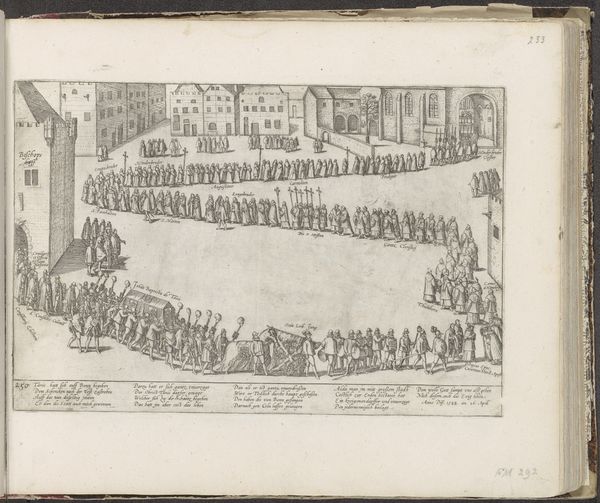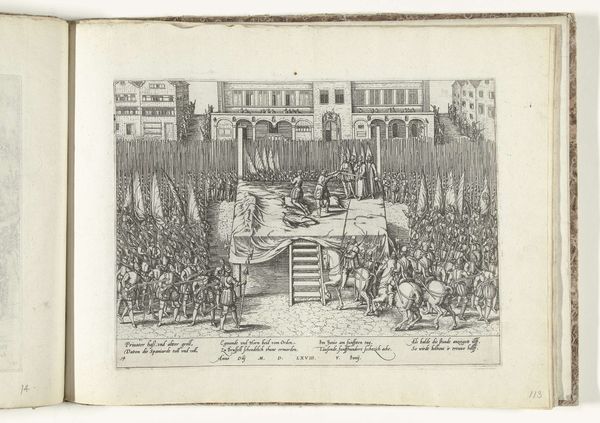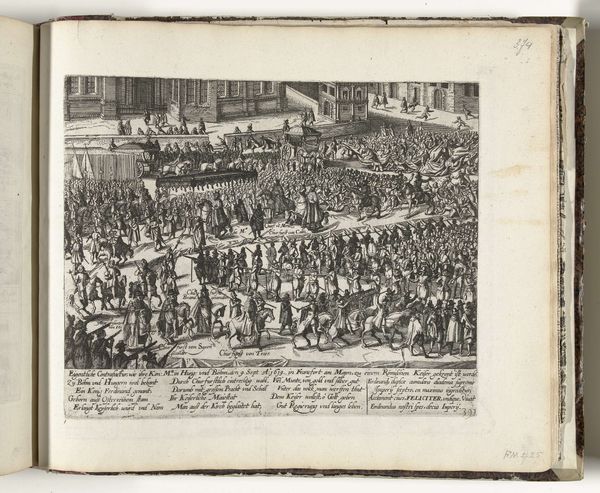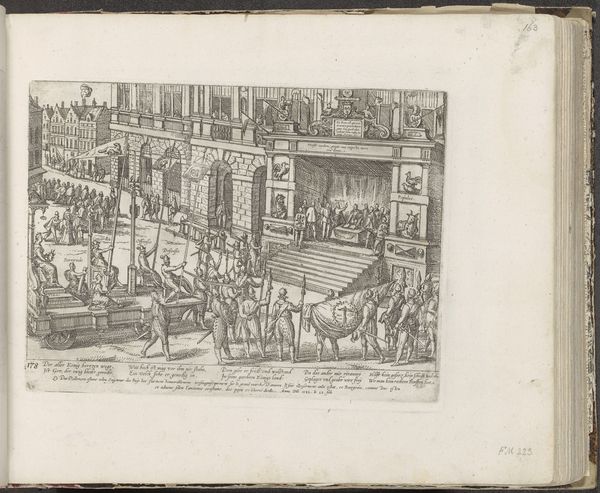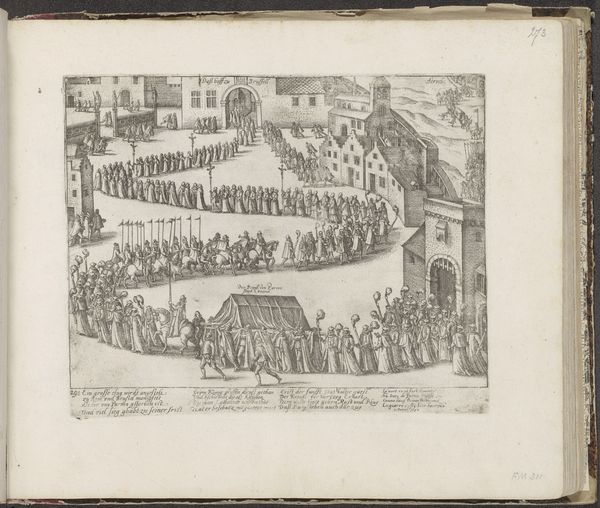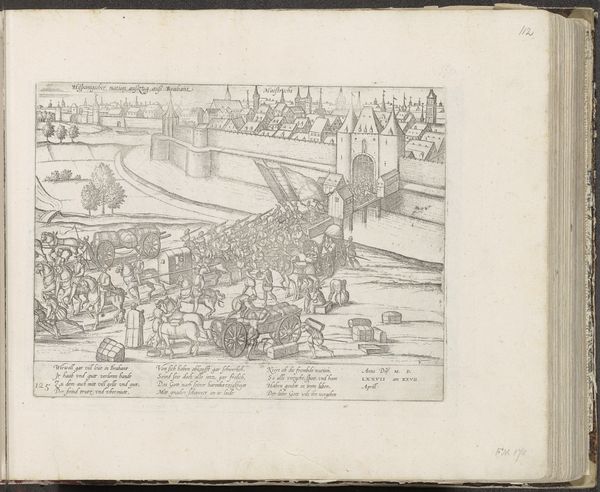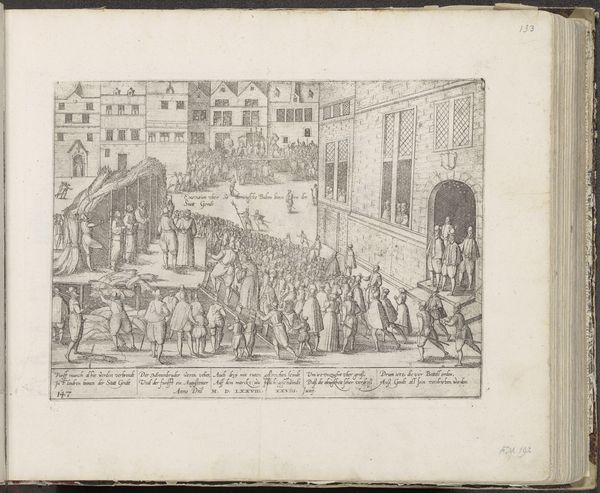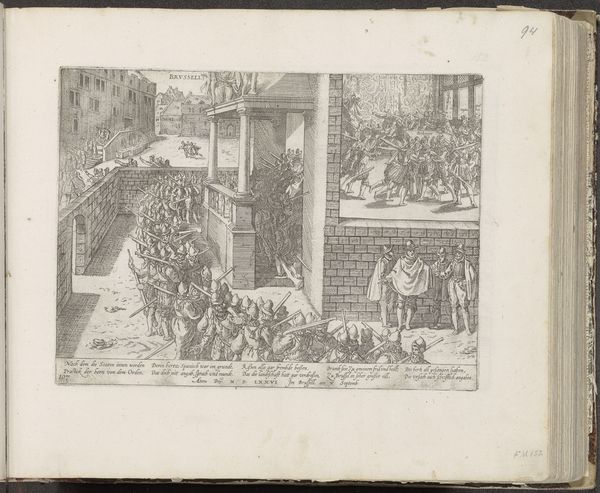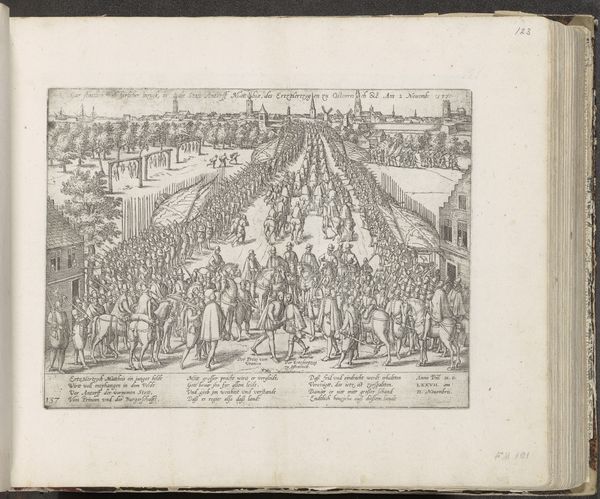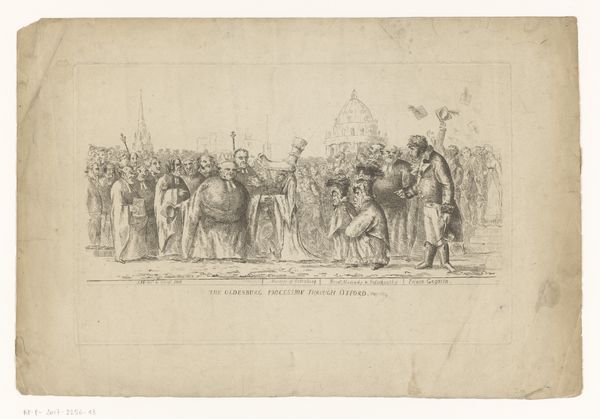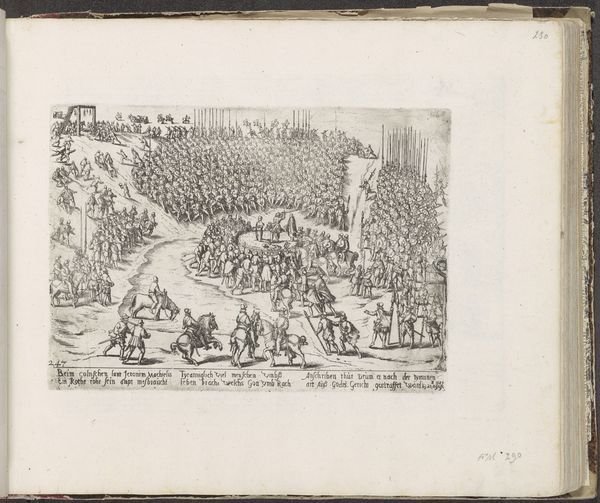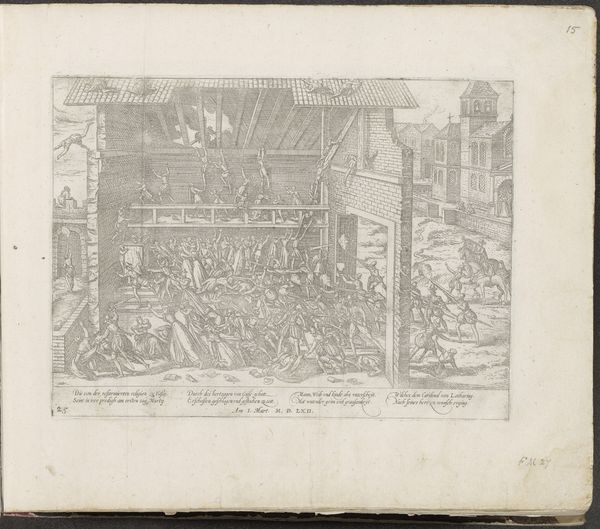
print, engraving
# print
#
landscape
#
figuration
#
history-painting
#
northern-renaissance
#
engraving
Dimensions: height 210 mm, width 282 mm
Copyright: Rijks Museum: Open Domain
Frans Hogenberg made this print in 1568, depicting the execution of eighteen noblemen in Brussels. It’s an etching, created by coating a metal plate with wax, scratching an image into the wax, then immersing the plate in acid. The acid bites into the exposed metal, creating lines that hold ink. The whole plate is inked and wiped clean, so that ink remains only in the etched lines. Finally, the plate is pressed onto paper. The result is a reversed mirror image of the original drawing. This technique, like other forms of printmaking, allowed for the mass production of images. It democratized visual culture, enabling the widespread distribution of news and propaganda during times of political and religious upheaval. As we look closer, we can discern the amount of labor invested in the precise lines and details that compose the print. Think of it as a form of social media, spreading a powerful message to a wide audience. Hogenberg’s choice of etching, a relatively quick and reproducible method, reflects the urgency and accessibility of the print medium.
Comments
No comments
Be the first to comment and join the conversation on the ultimate creative platform.
